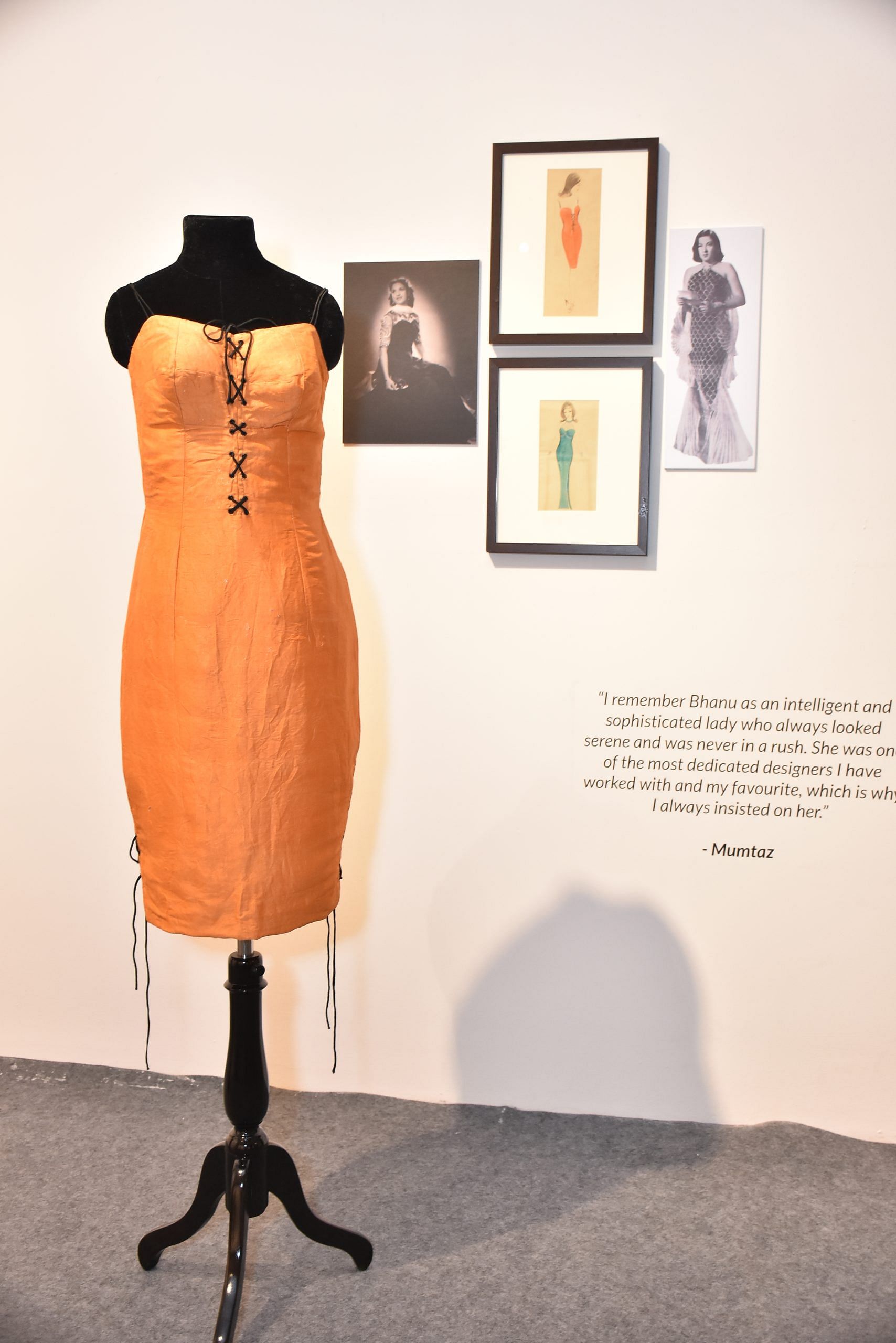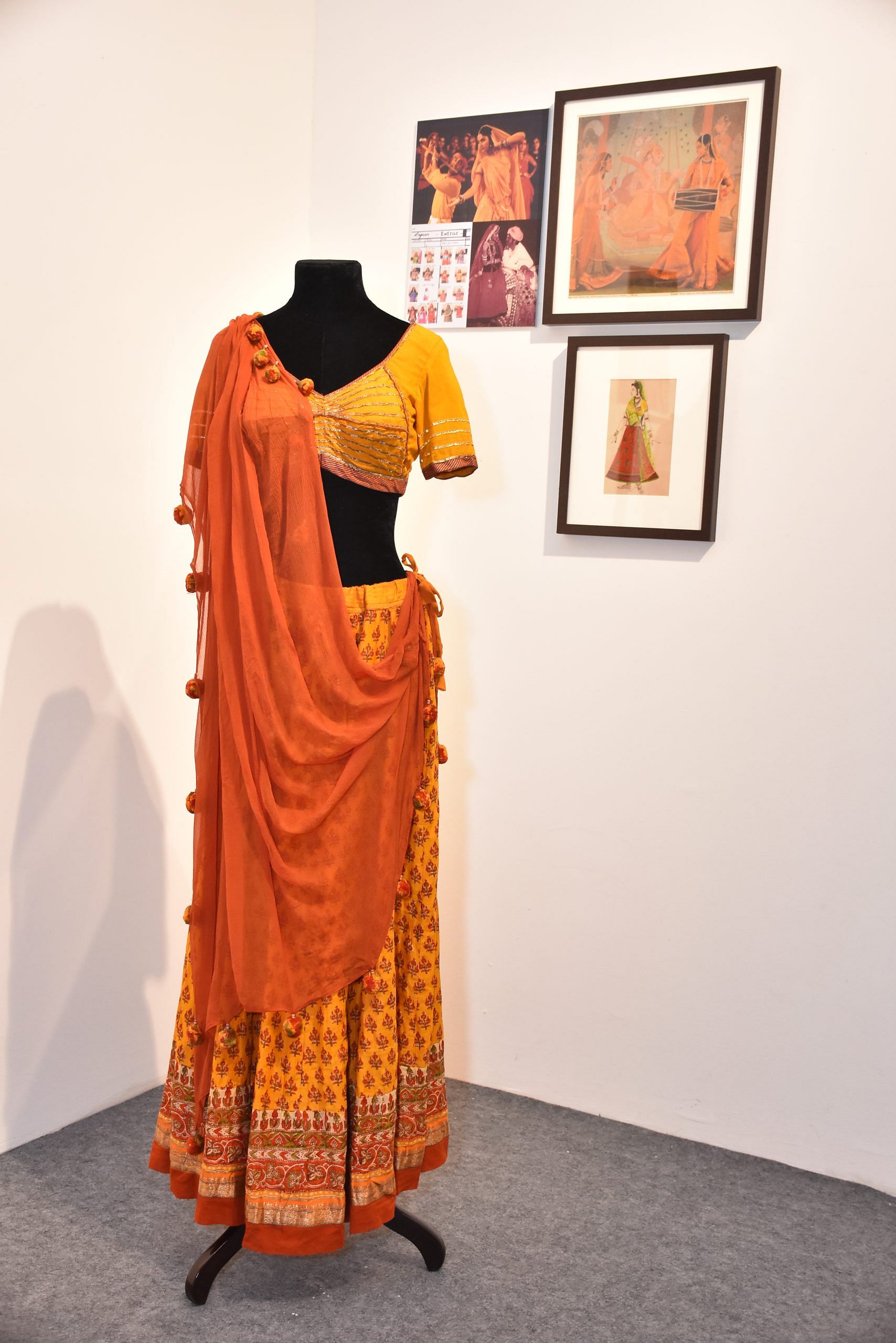WThe topi is common among the starched, cotton sarees worn by Vyjayanthimala, the iconic orange-bright ‘Amrapali sari’ worn by Vyjayanthimala for the 1966 film, and Rohini Hattangadi as Kasturba Gandhi. Gandhi (1982)? It is Bhanu Athaiya whose nimble hands conceptualise, design and iconicize sarees. The work of India’s first Oscar winner in the costume design category is on display at Bikaner House in New Delhi. in an exhibition titled Bhanu Athaiya’s legacyThe Amrapali sari reminds visitors of how it is a work of art and an iconic moment in the fashion history of 1960s Bollywood.
On a surprisingly warm winter evening on 28 January, celebrities from fashion, art and royalty graced a small exhibition space at Delhi’s Bikaner House. By 7 pm, there was not even standing room, as one visitor whispered to another, “He clearly underestimated Bhanu’s popularity.” A flex board outside announces an exhibition showcasing the works of Bollywood’s first costume designer, who seamlessly multitasks as jewelry curator and hairdresser when need be.
“Before Bhanu the costumes had nothing to do with the sets or the characters. They were just passed down to the people in a way. Then here comes Bhanu, and we start getting something that is sensitive, that is researched,” said fashion designer and textile historian Ritu Kumar at a panel discussion at the opening of the event. The panel also included exhibition curator Brijeshwari Kumari Gohil; Kiran Nadar, Founder and Chairperson of the Kiran Nadar Art Museum; Bhanu Athaiya’s daughter Radhika Gupta; and Radhikaraje Gaekwad, the Maharani of Baroda.
The exhibition, which looks at six decades of Athaiya’s works in art and cinema, gives an insight into the designer’s range, spanning from the green bridal lehenga worn by Salma Agha. nikah (1982) For Metal Dress made For advertisement of Onida. Gohil says, “I tried to break down the costumes that are most influential in the context of Indian cinema and set the tone for Indian fashion at the time, and also had historical meaning for how they shaped Indian culture and heritage.” did.”
Read also: Yash Chopra’s time was the dazzle of his time Kabhi Khushi Kabhi Gum
The magic of photographs and glamor
Bhanu Athaiya, born Bhanumati Annasaheb Rajopadhyay, worked with stars ranging from Raj Kapoor, Guru Dutt, BR Chopra, Yash Chopra, Vijay Anand and Raj Khosla to Ashutosh Gowariker, Jabbar Patel and Vidhu Vinod Chopra. If for Amrapali, the researched wall paintings of Athaiya at Ajanta caves in Aurangabad, for reshma and shera1971), she traveled all the way to attend a village wedding in Pochina, Rajasthan, to understand how the women wore their dupattas.
The exhibition, with around 50 exhibits, aims to bring to fore Bhanu’s work, which ranges from illustrations for her work in a women’s magazine to her paintings at JJ School of Art, costume designs for films as well as advertisements. , Written testimonials of actors from Mumtaz to Rekha are also part of the exhibition.

Bhanu was the only woman artist who became a part of the Bombay Progressive Artists’ Group (PAG). Kiran Nadar said, “Her modernist vision stemmed from her ability to sketch and paint and then expanded into her costumes.” In fact, visitors were inquiring with anticipation whether any of the items on display at the exhibition were for sale.
oscar legacy
Bhanu winning an Academy Award, India’s first, is also documented in the exhibition through the film’s costumes. Gandhi, is placed in front of giant screens showing a clip of Bhanu walking up the stairs to collect her Oscar. “The Nehru jackets that Bhanu designed for the film became popular in America after the film’s release,” says Gohil.
strict range of GandhiThe story, which spans more than 50 years of the leader’s life, became the basis that made the film an authentic, historically accurate representation of the time. The film was in stark contrast to the glamorous outfits Bhanu usually donned, but she rose to the challenge and accepted it.
“In today’s age, like a movie Gandhi Only the people working on the costumes would be needed. There was only Bhanu in the 80s. From jewelry to hair, her understanding of design and art allowed her to imbibe all aspects of an actor’s physical personality,” said Nadar.

18 years after winning the Oscar GandhiAthaiya was part of another film which became only the third film from India to be shortlisted in the Best Foreign Film category – Tax (2001). The canvas was large – cricket attire, British military uniforms, jackets for the ball, ladies’ elegant evening gowns and even the costumes of the villagers.
One of the lehengas worn by the film’s lead actress Gracy Singh while dancing to the song Radha how not to burn Also displayed in the exhibition. And for a moment, you are transported into a world of Tax, As you stand in front of the costume, in the discreetly lit exhibition hall. This is Bhanu’s legacy and impact of the collection on performance.